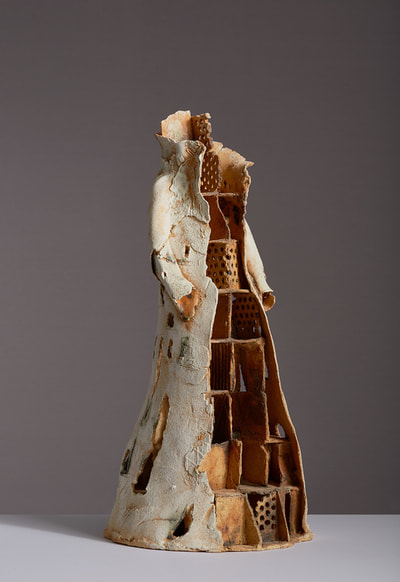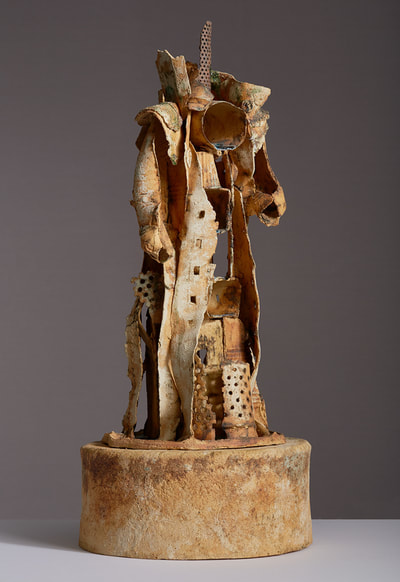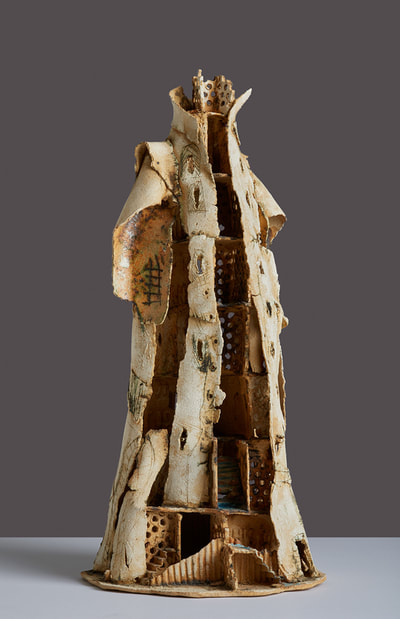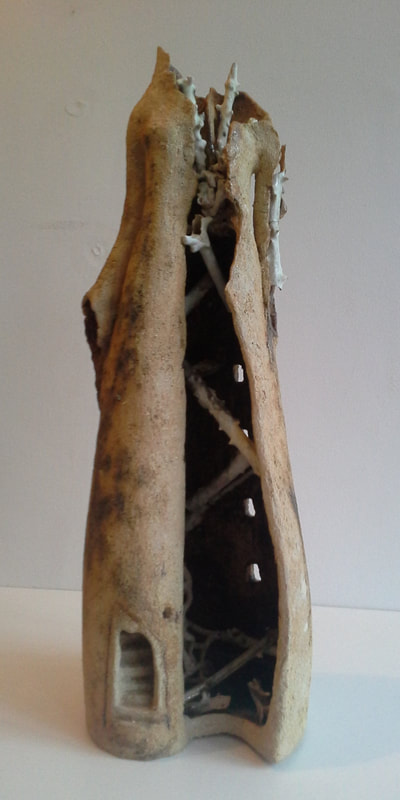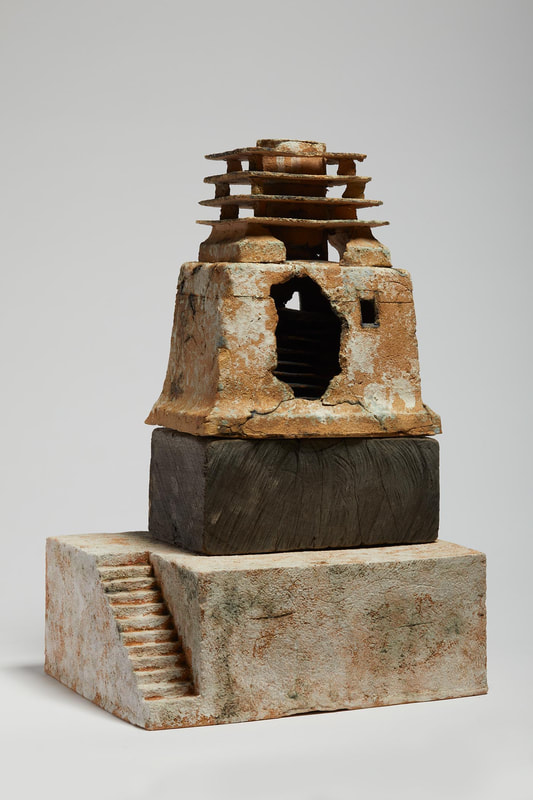Places of Shelter
What is behind the ideas that provide the impetus for the pieces I’ve made over the last few years?
Ideas are hard to pin down; I think they come from my own sense of the impermanence of all human efforts to create civilisation. Archaeology tells us that it was always like this; the world has always been tracked by refugees and homeless wanderers. Now there are whole populations with nowhere to go. Homes are built and then destroyed by time, weather or war.
At the same time, the visible remains of this process are poignant and fascinating, from ancient traces of human occupation with their unanswerable questions, to the shattered remains of once smooth-surfaced contemporary lives.
Structure is exposed. What lies behind the facade becomes important. The form these ideas take in the pieces I make is always dictated by the clay. There’s great pleasure in finding out what clay can do when stretched, torn, impressed and my first thoughts are modified and developed by this making process.
Earlier preoccupations with folk tales and other narratives are part of the same underlying theme. So many stories begin with the banished hero setting out to seek his or her fortune, or returning damaged by years of war, trying to find a place in the world.
Other forms of narrative strengthen the theme -- poems like Tom O’Bedlam’s Song or the storm sequence from King Lear.
Ideas are hard to pin down; I think they come from my own sense of the impermanence of all human efforts to create civilisation. Archaeology tells us that it was always like this; the world has always been tracked by refugees and homeless wanderers. Now there are whole populations with nowhere to go. Homes are built and then destroyed by time, weather or war.
At the same time, the visible remains of this process are poignant and fascinating, from ancient traces of human occupation with their unanswerable questions, to the shattered remains of once smooth-surfaced contemporary lives.
Structure is exposed. What lies behind the facade becomes important. The form these ideas take in the pieces I make is always dictated by the clay. There’s great pleasure in finding out what clay can do when stretched, torn, impressed and my first thoughts are modified and developed by this making process.
Earlier preoccupations with folk tales and other narratives are part of the same underlying theme. So many stories begin with the banished hero setting out to seek his or her fortune, or returning damaged by years of war, trying to find a place in the world.
Other forms of narrative strengthen the theme -- poems like Tom O’Bedlam’s Song or the storm sequence from King Lear.


